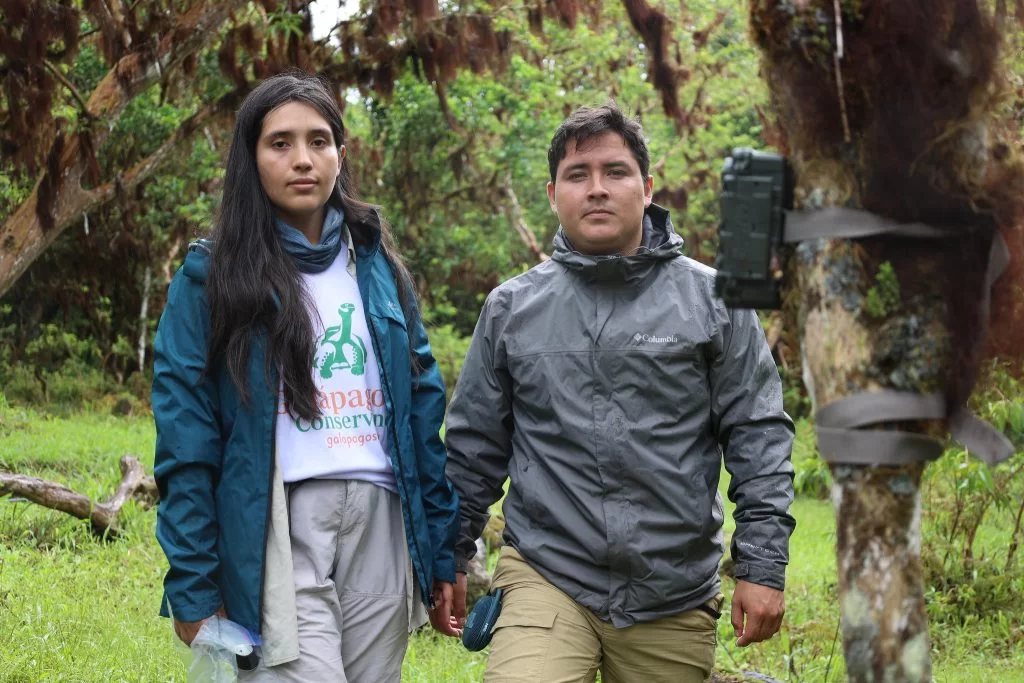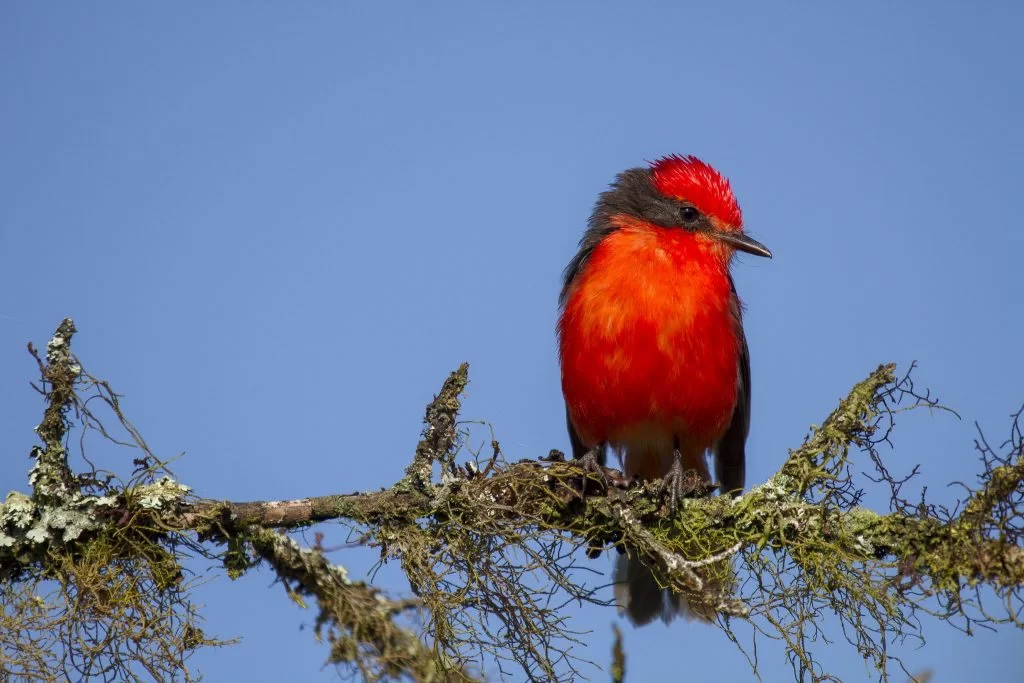Pablo Escarabay is a young Galapagos resident who was a beneficiary of a Galapagos Conservancy Action Grant and began an intense search for the Vermilion Flycatchers after people reported seeing them in the wild.
He was able to form a solid research team with Diana Calderon. Pablo stated that they are organizing daily group hikes and conducting frequent search camps to find the Vermillion Flycatcher. We are optimistic as there have been reports of sightings of the iconic Galapagos bird.
To attract the witch-bird, the team uses modern technology such as acoustic recordings that record bird sounds and are placed in search areas’ trees. To capture film evidence, they have placed camera traps at strategic locations. Pablo emphasizes that the community, particularly the San Cristobal farm owners, must participate in the identification and capture of search areas. Their support is crucial to this process.
The camera traps have captured many species of birds, including flycatchers and finches, as well as owls and Smooth-billed Ani. They all seem to be attracted by the sounds of birdsong.
Experts recommend identifying strategic areas that provide the Vermilion flycatcher with ideal habitat. These areas should be identified by farm owners who have reported sightings of the animal in recent years. Pablo said, “We will continue to exhaust every resource and effort to corroborate these sightings. In the meantime we remain optimistic that the San Cristobal Vermilion Flycatcher won’t [remain] on the list of extinct species.”
The Galapagos Vermilion Flycatcher is an endemic species. There are two subspecies. One, San Cristobal has been declared extinct by IUCN. Another, a. This bird can be found on more than ten Archipelago islands, apart from San Cristobal. Unfortunately, it has suffered a rapid decline and has been designated as vulnerable by IUCN.

Pablo Escarabay and Diana Calderón searching for Vermilion Flycatcher © Galápagos Conservancy



